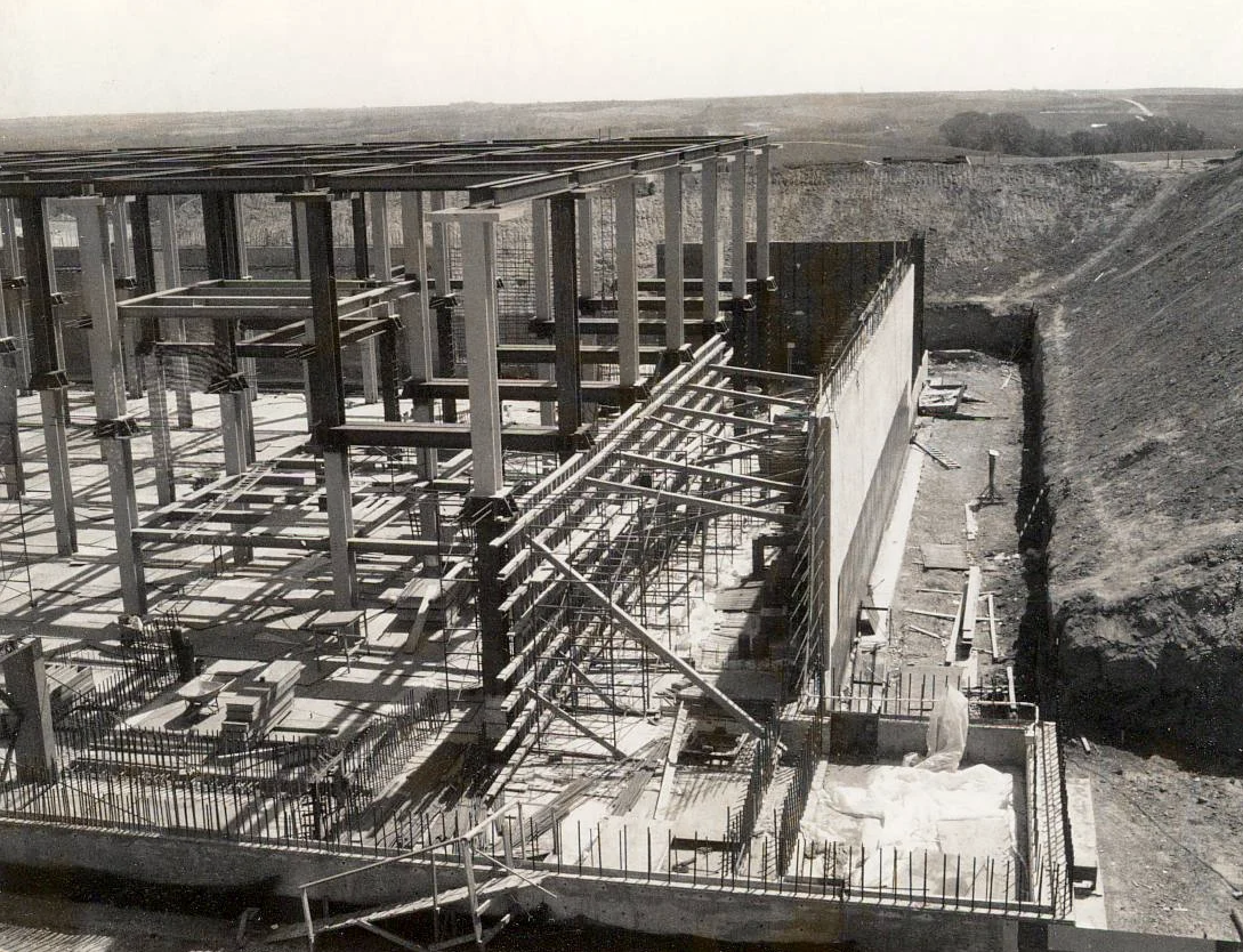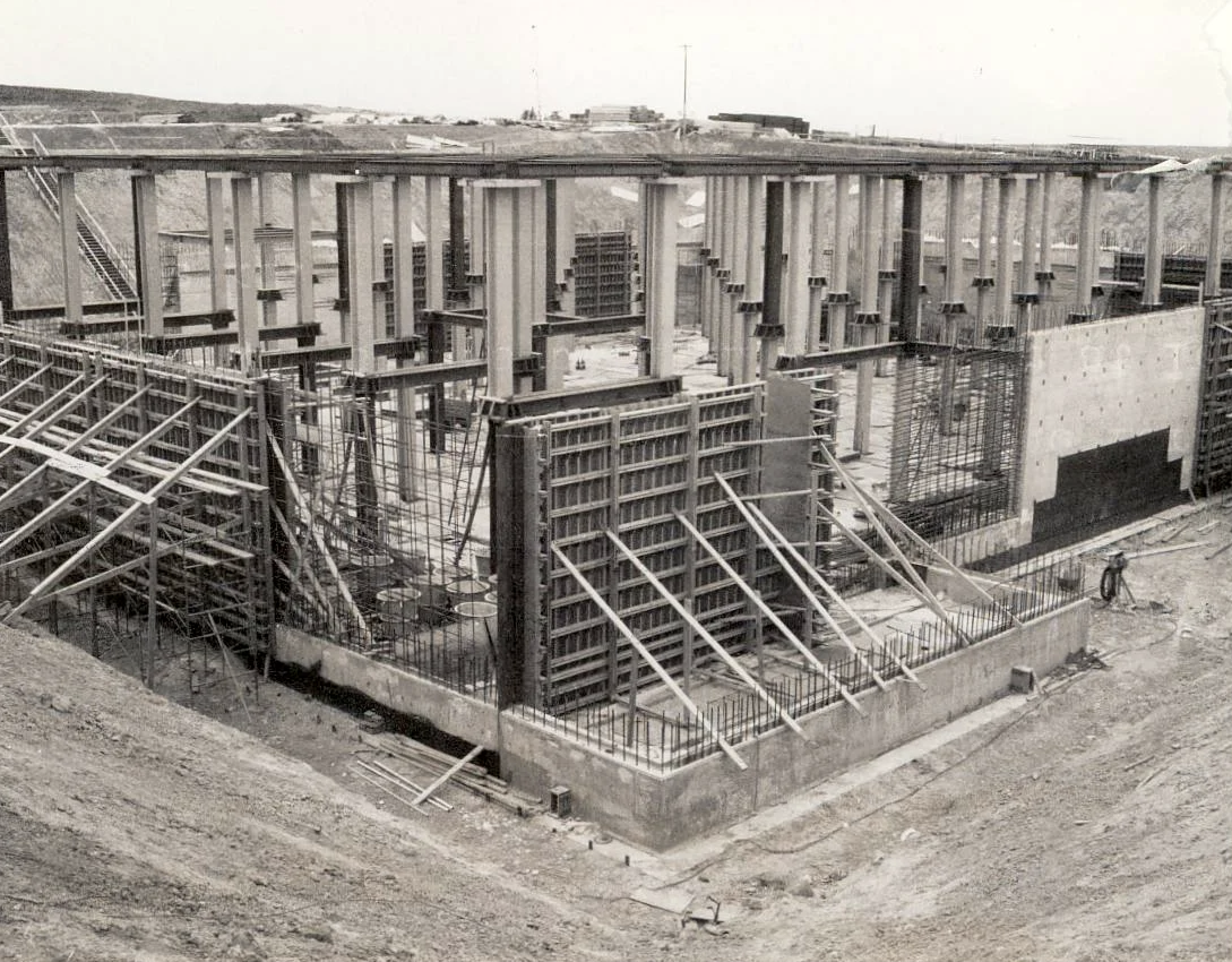
Historical Background and Purpose
The AT&T Long Lines telecommunications bunkers, a critical component of the United States' Cold War-era infrastructure, played a pivotal role in maintaining nationwide communications during a time of heightened tension between superpowers. Constructed between the 1950s and 1960s, these bunkers, numbering over 2,000, were part of the nation's hardened communication system designed to withstand potential nuclear strikes and ensure that vital lines of communication remained operational in the event of a national emergency. As the Cold War intensified, the United States government recognized the growing threat posed by the Soviet Union’s expanding nuclear arsenal.
The prospect of a nuclear exchange necessitated a resilient communications infrastructure capable of surviving a potential attack. AT&T, in partnership with the Department of Defense, developed a nationwide system of hardened long-line telecommunications bunkers, which were integral to the defense communications network. These bunkers formed part of a vast microwave relay network that supported civilian communications, military command and control, and emergency government communications.
The long lines system was initially established to carry long-distance telephone calls across the country via microwave towers. However, during the Cold War, its strategic importance grew as the system was adapted to provide secure and reliable communications in case of a nuclear strike. The network included both above-ground microwave towers and underground bunkers housing vital communications equipment. These bunkers were strategically placed in remote locations to avoid targeting and were connected to other defense-critical communication facilities like the NORAD command center, the White House, and military installations.
Design and Construction: The AT&T bunkers were designed with robust construction to withstand nuclear attacks, electromagnetic pulses (EMP), and other disaster scenarios. Built with reinforced concrete, the walls of these structures were typically several feet thick and included steel reinforcements. The facilities were often buried deep underground, with some located 30 feet below the surface, providing additional protection against both blast forces and radioactive fallout.
The primary construction material was concrete, which was chosen for its durability and strength. These bunkers also incorporated significant layers of earth, steel, and lead shielding to minimize the effects of radiation and EMP. Many of the bunkers were equipped with blast doors, air filtration systems, and self-contained power supplies to allow for extended periods of independent operation in a post-nuclear environment.
EMP and Nuclear Hardening
A crucial aspect of the AT&T long-line bunkers was their nuclear and EMP hardening. EMP is a significant threat in the aftermath of a nuclear detonation, capable of damaging or destroying electronic equipment over vast distances by inducing high-voltage surges in electrical circuits. The bunkers were specially designed to mitigate this threat. This was achieved by shielding the communication equipment inside the bunkers with Faraday cages and grounding mechanisms to protect the sensitive electronics from EMP surges.
In addition, the construction materials—particularly the thick layers of concrete and steel—served as an effective barrier against the thermal and blast effects of a nuclear detonation. The air filtration systems within these bunkers were also designed to prevent radioactive particles from entering the facilities, ensuring that the personnel and equipment inside could continue to operate in the event of fallout.
Use and Role During the Cold War
During the Cold War, the AT&T long-line bunkers operated in conjunction with microwave relay towers that transmitted long-distance signals across the United States. These signals carried not only public telephone calls but also critical military and government communications. The bunkers housed the electronic equipment necessary to relay these signals between various points in the network, ensuring that even if part of the system were damaged in a nuclear attack, communication could continue via alternate routes.
Many of the bunkers also served as secure communication hubs for the Federal Emergency Management Agency (FEMA) and other defense-related agencies. Their national strategic importance meant that the bunkers were closely guarded and located in secluded areas outside of small rural towns, with access restricted to authorized personnel.
Decommissioning and Post-Cold War Use
As the Cold War came to an end in the late 1980s and early 1990s, technological advancements—particularly in satellite communications and fiber optics—rendered the AT&T long-line system obsolete. With the decline of the nuclear threat and the emergence of newer, more efficient communication technologies, many of these bunkers were decommissioned and sold off in the 1990s and early 2000s.
Today, many of the former AT&T bunkers have been repurposed by private individuals or companies, with some converted into secure data centers, private residences, or emergency shelters. The inherent strength of their construction and their location in remote areas has made these bunkers attractive for reuse, particularly for those interested in high-security or disaster-resistant properties.
Legacy and Historical Significance
The AT&T long-line telecommunications bunkers stand as a testament to the Cold War’s impact on American infrastructure and defense strategy. Their construction represented a significant investment in national security during a period when the threat of nuclear war loomed large. While no longer in active use for their original purpose, these bunkers remain a symbol of the United States’ determination to protect its communication capabilities against the gravest of threats.
In addition to their historical importance, these structures provide valuable insight into mid-20th-century engineering, particularly in the field of hardened infrastructure. Their continued preservation, whether through adaptive reuse or as historical relics, helps to educate future generations about the strategic measures taken during the Cold War to safeguard national security.









